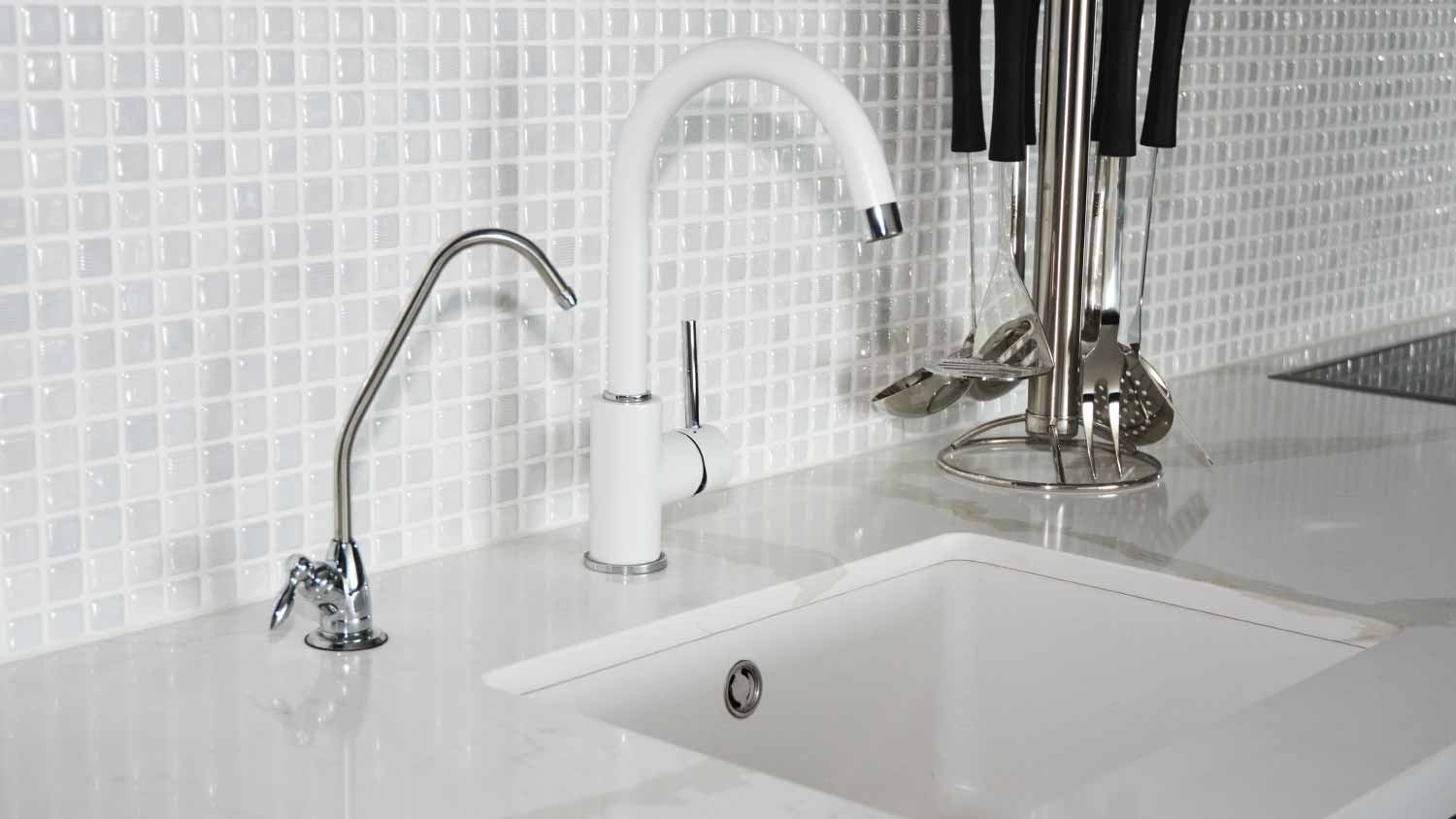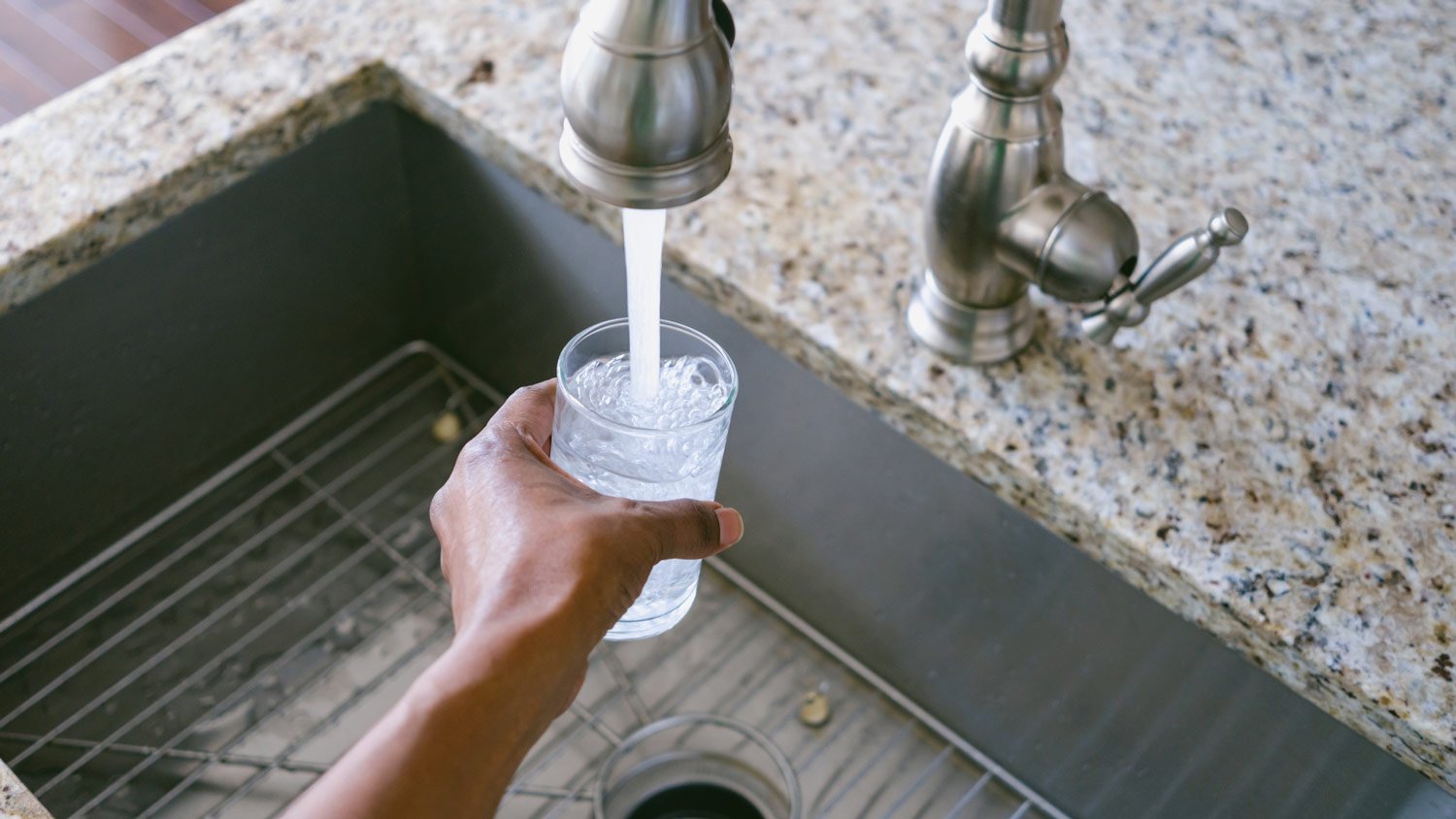
The cost to cap a gas line is relatively low, as plumbers can handle the job in roughly an hour. We break down cost factors and DIY considerations.
Kitchen sink installation isn’t only for the pros


When hiring a pro, the cost to install a kitchen sink ranges between $220 and $650, but experts lower the risk of accidental damage.
Some sinks are heavy or awkward to install alone, but a sink installation company has the tools and experience to handle them safely.
Many pros also offer old sink removal for as little as $20, making the upgrade process even easier.
Experts are aware of common sink installation pitfalls—such as overtightening nuts and bolts and using a sink that’s too small for the opening—and how to avoid them.
A new kitchen sink can give your kitchen an entirely new feel, but installation can be costly. Learning how to install a kitchen sink yourself may save you money, but it can be complicated if you aren't comfortable working with water lines, or worse yet, creating a larger hole than the existing sink. If you have experience working with home plumbing, follow this guide to install a kitchen sink and save on labor costs.
These prep steps can save you from making expensive and detrimental mistakes. Start by determining the right kitchen sink size. It’s best to stick to a sink that fits the current opening size, as it eliminates the need to enlarge the opening. Measure the sink’s width, height, and length to ensure you purchase the exact size you need.
If you're considering undermount sinks, ensure you have the right type of countertop. Only solid surfaces or natural stone countertops can withstand the weight. Depending on the sink, you might need another person to help you with its weight.
Also consider other features, including the type of drain, faucet, and faucet controls you prefer. Before starting the installation process, pay close attention to the drain tailpieces and P-trap in case you need new parts.

If you're not installing a kitchen sink for the first time and need to remove your old sink, you’ll need to remove your old kitchen sink before you can put in the new one. Follow these steps to prepare your kitchen for a new kitchen sink.
Turn off the supply lines for your hot water and cold water by turning the shut-off valves until water doesn't come out of the faucet when you turn on the sink.
To remove pressure in the water lines of your sink, turn the faucet or faucets on.
Disconnect the water supply lines to your faucets using an adjustable wrench. Keep a bucket on standby for water exiting the supply lines after you've removed them.
Loosen the dishwasher drain line until it disconnects.
Turn off the circuit breaker to your garbage disposal and unplug it before disconnecting the hardware from the sink. Use a bucket to catch water that drains or drips from the drainpipe.
After disconnecting the disposal, keep the bucket nearby and then remove the disposal. Every disposal is different, so follow the manufacturer's instructions to remove your garbage disposal.
Not all sinks use clips to stay secured to the counter, but if you’re installing an undermount sink, then you'll need to do this step. With a screwdriver or wrench, loosen the clips securing your sink to the counter.
Use a utility knife to cut the caulk securing the sink to the countertop. Work your way around the perimeters until you've gone all the way around the sink.
While you can do this step solo, it's helpful to have a friend or family member push the bottom of the sink while you lift the top of the sink until it comes out of the countertop.
With a putty knife, gently remove old mineral deposits, caulk, and plumber's putty. Then, wipe away the debris until clean.

To install a kitchen sink, you must determine if you have an undermount or drop-in sink and determine whether the hole already exists in the countertop or if you must make the hole. Be sure you have all the necessary tools before starting, and if you need extra muscle, have another person there to help.
Even after you've meticulously measured your current sink’s dimensions, there's still a chance that the new sink doesn't fit as planned. Place the new kitchen sink into the existing opening to ensure your new kitchen sink fits before getting started to save you the trouble of having to go to the store when you're ready to install it.
If the sink doesn’t quite fit, then it’s time to bring out a jigsaw to cut the new hole. But before you get started, use a measuring tape to measure the exact opening, or trace the new sink's outline and place it on the existing opening to see how much you must enlarge it.
Place the sink upside down on your countertop to install the kitchen faucet. Thread the faucet through the gasket sealing the faucet and sink, and then through the sink holes. Secure the faucet to the sink using the provided nuts and bolts.
If you're going to install a garbage disposal, then attach the disposal mounting brack before you install the sink, following the manufacturer’s instructions.
Next, place plumber’s putty around the strainer and push it up through the drainage hole. Don’t forget to secure the locknut on the strainer with pliers to ensure it’s properly installed.
Use a dry rag or towel to gently wipe away extra putty around the outside of where the gasket meets the sink.
Before installing the sink, place a small, steady layer of silicone caulk around the perimeters of the sink’s lip.

Now, turn the sink right side up, paying close attention to the front of the sink so that it aligns with the countertop’s edge. Make sure the sink is completely lined up before the caulk dries or you'll have to remove the caulk and repeat this step for a flush installation.
This is where a friend can come in handy. If you're installing an undermount sink, then you'll need to secure the sink to the countertop using clips. Work your way around the edges of the sink to secure the clips using the old sink’s pilot holes as a guide while your friend supports the bottom of the sink.
Connect the shut-off valves to the water supply and install both hot and cold water lines. Connect the spray hose if your sink has one. Do not turn on the water yet.
Check the drain pipes to ensure the existing pipes fit the new sink. If not, make adjustments, such as cutting a pipe that's too long or purchasing a new pipe if the existing pipe is too short.
Use your hand to tighten the plastic fittings and reconnect drain pipes for garbage disposals or dishwashers.
To prevent water from slipping between the sink's cracks and the countertop, squeeze a small, steady bead of the sealant around the sink.
Next, turn the water on and test for leaks. Keep your buckets under the pipes until you're sure the sink is secure, and there aren't any drips.
When you first turn the faucet on, it will likely sputter due to trapped air; let it run its course. Keep the water running and check all connections and drain pipes for leaks. If you notice leaks, try tightening the fittings, but be careful not to go too tight. If the leaks continue, consider replacing the hardware.
Once you're sure there are no leaks, and the water runs, turn on the power of the garbage disposal and dishwasher for full use of your new sink.

Installing a kitchen sink is possible by yourself. It doesn't require expensive tools or much plumbing knowledge, but these tips can help prevent unnecessary complications.
Install the faucet and strainer before the sink to save yourself the hassle of fitting under the dark sink.
Fully remove all existing caulk, replacing it with new caulk to ensure the new sink fits flush to the countertop.
Consider having a second person available to hold the sink while you tighten the connections.
Don’t over-tighten the nuts and bolts.
Keep a paper towel underneath the pipes for a few days and watch for any new leaks.
Never try to fit a sink smaller than the opening, instead, return it for a new sink.
Consult your garbage disposal owner's manual for proper installation with the sink.
Be sure your plumbing isn’t rusted or doesn’t require replacement before installing a new sink.
DIY kitchen sink installation can save you money if your plumbing and hardware are new and you don’t have major plumbing issues. However, it can also cause many headaches, especially if plumbing issues exist or you make a costly mistake during the installation process.
The cost to hire a pro to install a kitchen sink ranges from $220 to $650, depending on where you live and the sink’s size and type. Hiring a local sink installer will ensure that the installation process runs smoothly and efficiently.
From average costs to expert advice, get all the answers you need to get your job done.

The cost to cap a gas line is relatively low, as plumbers can handle the job in roughly an hour. We break down cost factors and DIY considerations.

A leaky faucet can lead to costly water damage and a lot of wasted water. Learn how much it costs to fix a leaky faucet based on type, part and labor.

Everyone can relate to having toilet issues—we’ve all been there. There are several reasons why your toilet might need repairs, and the cost varies based on the damage.

It’s a big issue when no cold water is coming out of the faucet. Whether it’s a pipe problem or something else, take these steps to identify the cause and get cold water flowing again.

Touchless faucets offer benefits like saving water, avoiding germs, and simplifying cleanup. Learn the top benefits of hands-free faucets and decide whether to switch.

Read these 9 tips for inspiration on how to reduce your toilet’s water usage